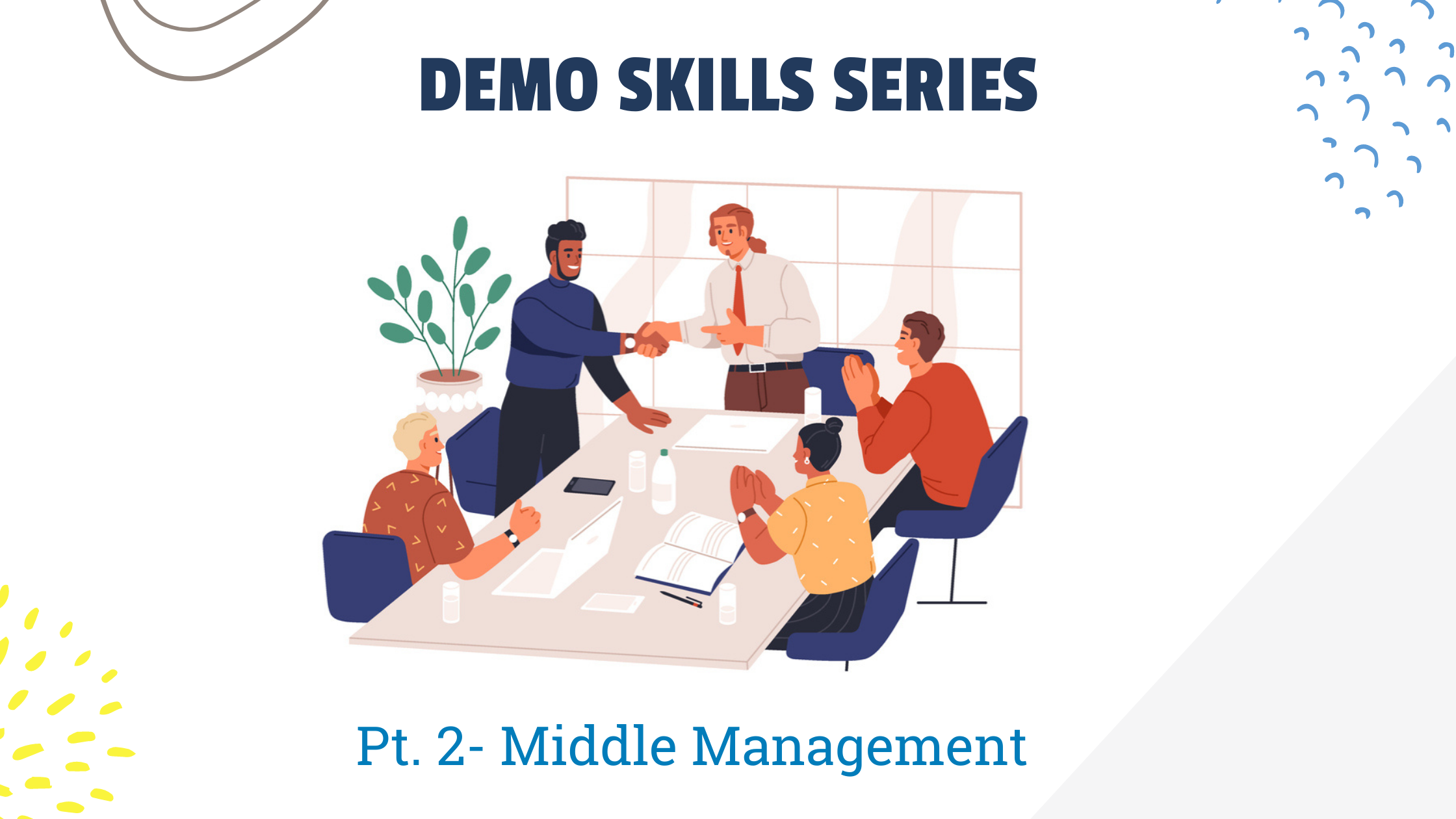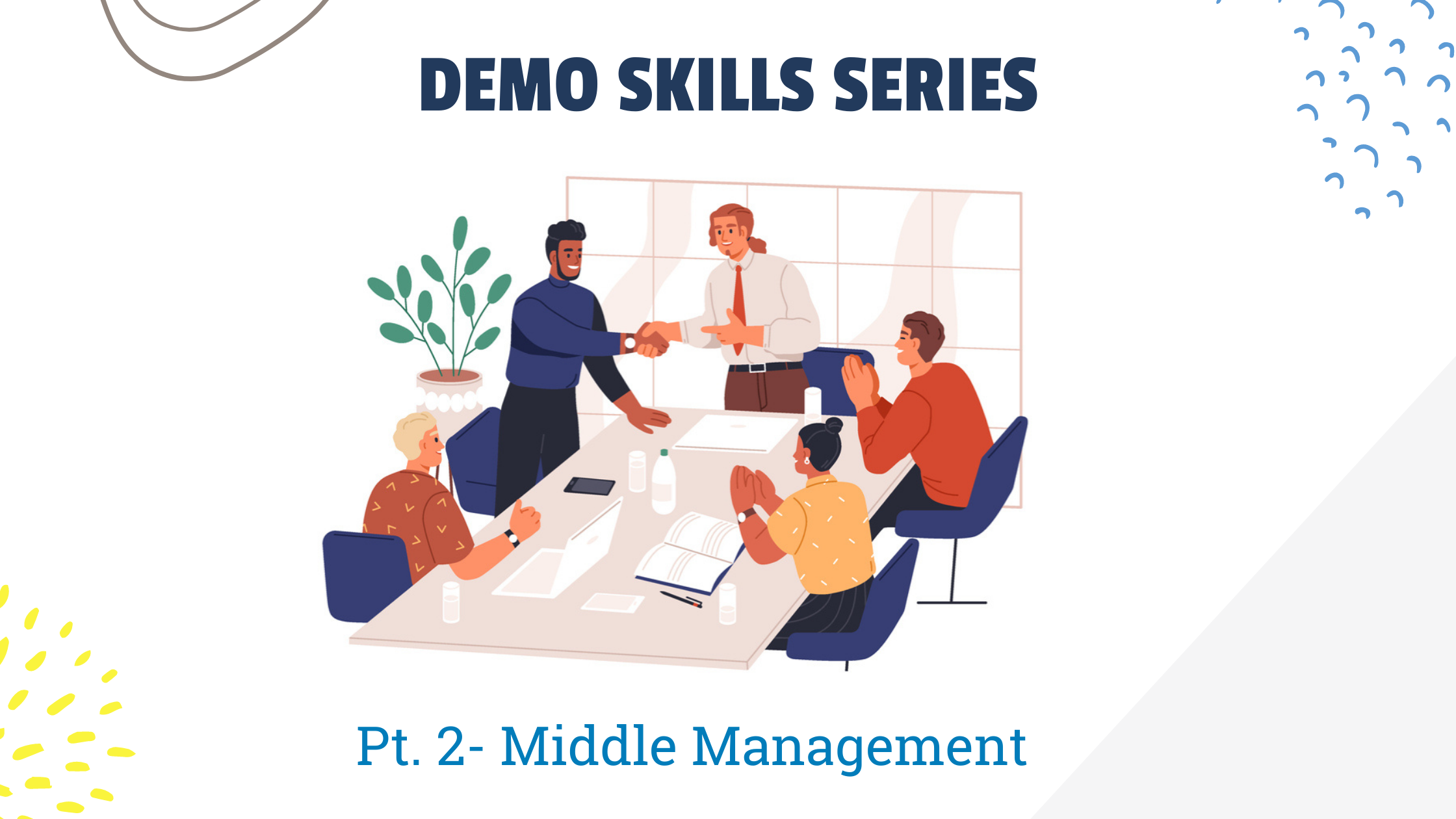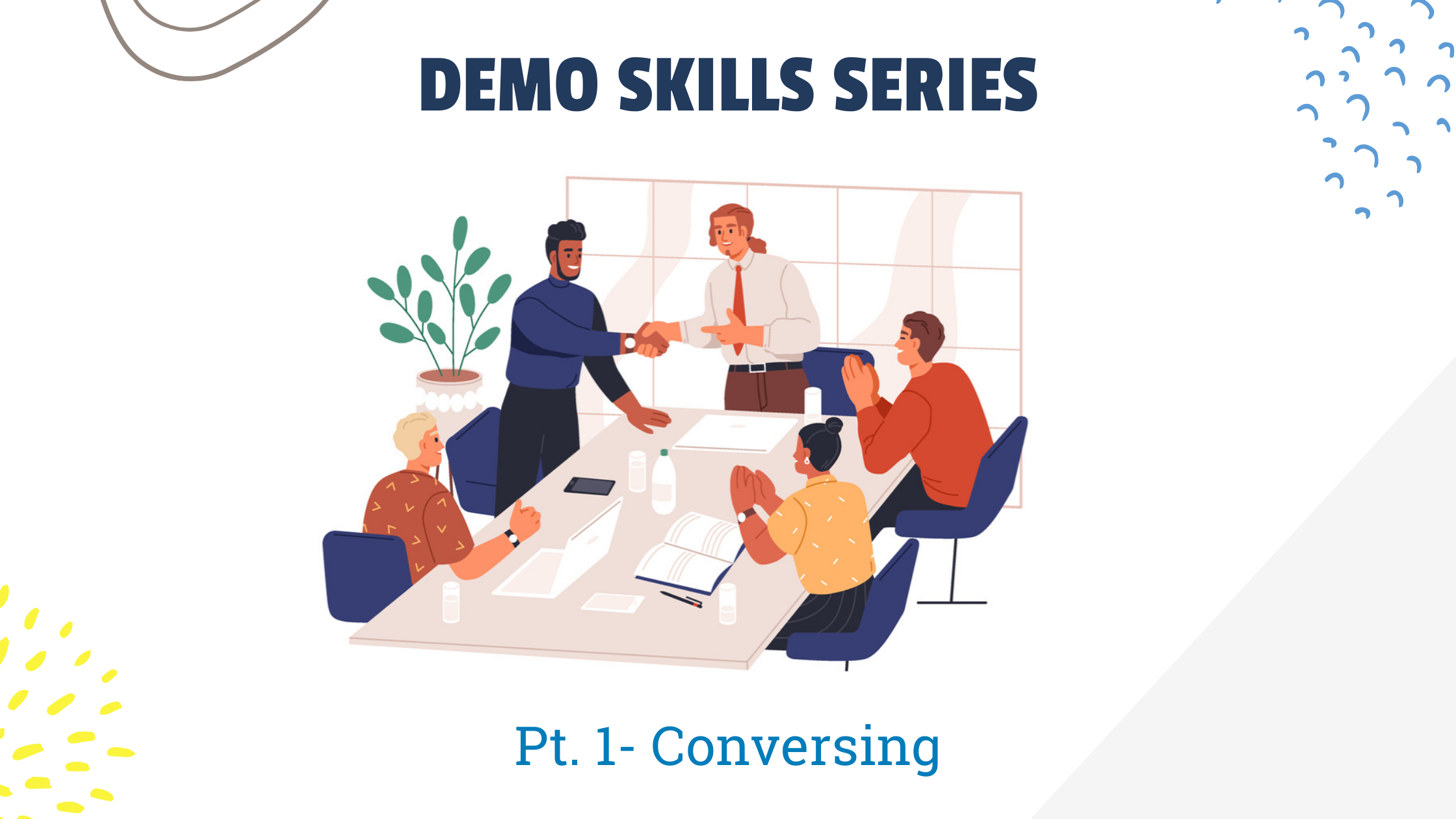
It’s important to remember that you're NOT presenting to a group of people in a demo. You need to break the invisible plane in the room and present features and benefits to the individuals in a conversational manner.
Picture This:
For the past 20 minutes, you have been demonstrating the onboarding process that your H.R. solution improves. Along the way, you have demonstrated not only excellent features and benefits that are relevant to the needs of the H.R. staff, but you’ve also been conversational with the individuals in that group. It hasn’t been so much a demo to a group as it has been a productive, interactive meeting.
It is now time to conclude this section of the demo and transition to the employee self-service area of the software. Bring up a visual (slide, whiteboard, flipchart, etc.), walk away from your laptop and towards the manager in the room, and present a summary of the insights that you presented to the staff. It might sound like this, “Karen, I’d like to summarize your new onboarding processes with the following insights.” At this point, you discuss potential improvement metrics, customer successes, industry expert evidence, linkage to discovery findings, or how this helps achieve personal goals. But, it is critical that you establish an interpersonal bridge as you discuss these insights. You need to look Karen in the eye and talk to her. Engage her. You want her to agree with your insights but not at the sacrifice of some healthy discussion.
The primary reason you can confidently turn to the manager and summarize this section of the demo with insights is that you’ve earned the right to do so. This right was established one step at a time as you presented relevant and impactful demo elements to their staff complete with benefit statements. If you add up all the times you finished a demo element with benefit statements like; time savings, ease of use, improvement, etc. These add up to your right to summarize this section with insights.
You might be concerned that having this interpersonal conversation is ignoring everyone else in the room. The answer of course is, don’t ignore them. You will occasionally turn to others in the room to keep them engaged but 80% of your attention is on the manager.
So What?
What you present to middle managers are insights that address productivity and risk. How you present it is in a conversational and interpersonal way. This will not only differentiate your solution from the competition but also you from every other presenter.





